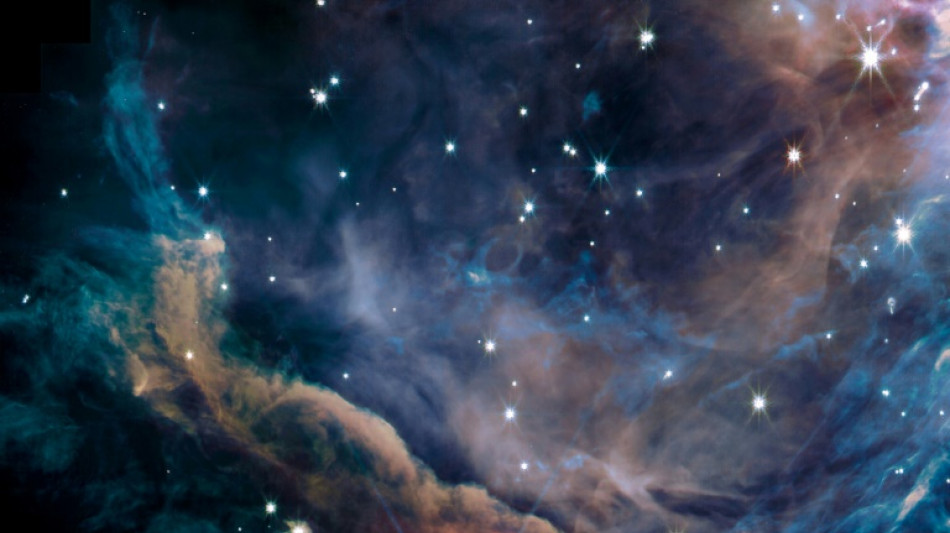
-
 UN nuclear chief in Iran to 'reach diplomatic solutions'
UN nuclear chief in Iran to 'reach diplomatic solutions'
-
Israel face France in Paris football match under tight security

-
 Beijing's fears after Trump fills key posts with China hawks
Beijing's fears after Trump fills key posts with China hawks
-
Man with explosives dies trying to enter Brazil's Supreme Court

-
 South Korea exam sees record number of re-takes after medical reforms
South Korea exam sees record number of re-takes after medical reforms
-
Asian markets mixed as traders weigh Fed; bitcoin above $90,000

-
 Pumas seek historic win over 'hurt' Irish
Pumas seek historic win over 'hurt' Irish
-
Advantage Martin as MotoGP reaches gripping climax in Barcelona

-
 Man with explosives dies trying to enter Brazil Supreme Court
Man with explosives dies trying to enter Brazil Supreme Court
-
Mike Tyson, 58, back in ring to face Youtuber Paul

-
 Hunger in G20 host Brazil is Lula's unfinished fight
Hunger in G20 host Brazil is Lula's unfinished fight
-
Biden, Xi arrive in Peru ahead of face-to-face at Asia-Pacific summit

-
 Mysterious diamond-laden necklace fetches $4.8 mn in Geneva auction
Mysterious diamond-laden necklace fetches $4.8 mn in Geneva auction
-
Lawmakers clash, protesters arrested in wake of Amsterdam violence

-
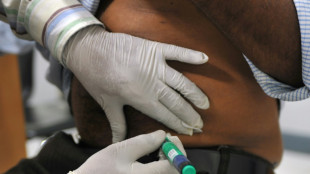 Global diabetes rate has doubled in last 30 years: study
Global diabetes rate has doubled in last 30 years: study
-
Six Israeli troops killed, deadly strikes in Lebanon

-
 US envoy says Mexico's 'hugs not bullets' strategy failed
US envoy says Mexico's 'hugs not bullets' strategy failed
-
Lyon and Chelsea stay perfect in Women's Champions League

-
 Alcaraz beats Rublev to open ATP Finals account, Ruud misses last four chance
Alcaraz beats Rublev to open ATP Finals account, Ruud misses last four chance
-
Another clean sheet for Onana as E. Guinea, I. Coast qualify

-
 From 'Little Marco' to 'Mr Secretary': Rubio shows Trump China push
From 'Little Marco' to 'Mr Secretary': Rubio shows Trump China push
-
Sri Lanka president eyes parliament win in snap election

-
 Spain flood epicentre braces for fresh deluge
Spain flood epicentre braces for fresh deluge
-
New York drought conditions fan flames, spur water saving

-
 Football 'world order' is changing, says Brazil coach
Football 'world order' is changing, says Brazil coach
-
Maiden century by Varma gives India unbeatable series lead

-
 Buy now, pay later: Latin America pressured by Chinese online shops
Buy now, pay later: Latin America pressured by Chinese online shops
-
Republicans complete power takeover with House majority

-
 Kane disappointed by England Nations League withdrawals
Kane disappointed by England Nations League withdrawals
-
Trump victory signals golden era for crypto industry

-
 'First Buddy': Musk takes unusual star role with Trump
'First Buddy': Musk takes unusual star role with Trump
-
Workers stage walkout at US maker of Fallout video game

-
 England will not change 'DNA' against South Africa, says Slade
England will not change 'DNA' against South Africa, says Slade
-
Sri Lanka beat New Zealand to go 1-0 up in ODI series

-
 Biden, Xi to meet in Peru on Saturday: US official
Biden, Xi to meet in Peru on Saturday: US official
-
Spurs coach Popovich suffered 'mild stroke', says NBA team

-
 Spain flood epicentre under highest alert for fresh rain
Spain flood epicentre under highest alert for fresh rain
-
Turkey scrubs up its baths to keep hammam tradition alive
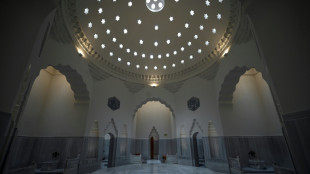
-
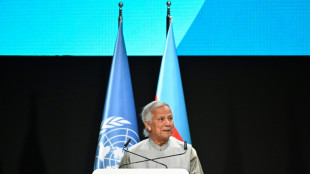 'Very humiliating': Bangladesh's Yunus seethes over climate cash fight
'Very humiliating': Bangladesh's Yunus seethes over climate cash fight
-
'Welcome back': Trump, Biden shake hands in White House

-
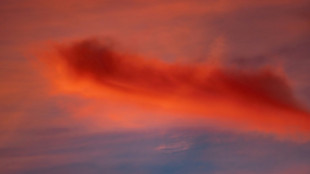 Tech's green wave hits choppy waters
Tech's green wave hits choppy waters
-
Fernandes hopes Amorim can 'change the energy' at Man Utd

-
 Trump, Biden shake hands in White House, vow smooth transfer
Trump, Biden shake hands in White House, vow smooth transfer
-
Gatland battling 'pain' during tough Wales rebuild

-
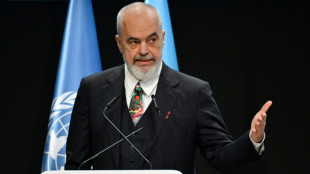 COP29 fight for climate money 'humiliating': Bangladesh's Yunus
COP29 fight for climate money 'humiliating': Bangladesh's Yunus
-
McIlroy aims for glory on happy hunting ground in Dubai

-
 Spain evacuates thousands in fresh flood alarm
Spain evacuates thousands in fresh flood alarm
-
US death row inmate stages jazz protest for release in London court
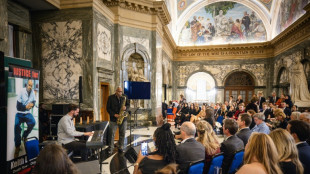
-
 Markets stall, inflation and bitcoin rise amid Trump fears
Markets stall, inflation and bitcoin rise amid Trump fears
-
Germany's embattled Scholz trades blows with rivals as election looms


Webb telescope promises new age of the stars
The James Webb Space Telescope lit up 2022 with dazzling images of the early universe after the Big Bang, heralding a new era of astronomy and untold revelations about the cosmos in years to come.
The most powerful observatory sent into space succeeds the Hubble telescope, which is still operating, and began transmitting its first cosmic images in July.
"It essentially behaves better than expected in almost every area," said Massimo Stiavelli, head of the Webb mission office at the Space Telescope Science Institute, in Baltimore.
Already scientists say the Webb telescope, now orbiting the sun at a million miles (1.6 million kilometres) from Earth, should last 20 years, twice its guaranteed lifetime.
"The instruments are more efficient, the optics are sharper and more stable. We have more fuel and we use less fuel," said Stiavelli.
Stability is vital for the clarity of the images.
"Our requirement was similar to that of Hubble, in terms of pointing accuracy. And we ended up being seven times better," the mission office chief added.
Public appetite for the discoveries has been fed by the colouring of the telescope's images.
Light from the most distant galaxies has been stretched from the visible spectrum, viewable by the naked eye, to infrared -- which Webb is equipped to observe with unprecedented resolution.
This enables the telescope to detect the faintest glimmers from the distant universe at an unprecedented resolution, to see through the veil of dust that masks the emergence of stars in a nebula and to analyse the atmosphere of exoplanets, which orbit stars outside our solar system.
- 18 petals -
"The first year (of observation) is a way to test out the tool for the small rocky planets in the habitable zone that could potentially be like Earth," said Lisa Kaltenegger, associate professor in Astronomy at Cornell University.
"And the tests are beautiful. They're spectacular."
Webb blasted off aboard an Ariane 5 rocket at the end of 2021 crowning a 30-year project at the US space agency NASA.
It took 10,000 people and 10 billion dollars to put the 6.2-tonne observatory into space.
En route to final orbit, Webb deployed a five-layer sunshield the size of a tennis court followed by a 6.5 metre primary mirror made up of 18 hexagonal, gold-coated segments or petals.
Once calibrated to less than a millionth of a metre, the 18 petals began to collect the light pulsing stars.
Last July 12, the first images underlined Webb's capabilities unveiling thousands of galaxies, some dating back close to the birth of the Universe, and a star nursery in the Carina nebula.
Jupiter has been captured in incredible detail which is expected to help understand the workings of the giant gas planet.
- 'Too many' galaxies -
The blue, orange and grey tones of the images from the "Pillars of Creation", giant dust columns where stars are born, proved captivating.
Scientists saw the revelations as a way of rethinking their models of star formation.
Researchers using the new observatory have found the furthest galaxies ever observed, one of which existed just 350 millions years after the Big Bang some 13.8 billion years ago.
The galaxies appear with extreme luminosity and may have started forming 100 million years earlier than theories predicted.
"In the distant Universe, we have an excess of galaxies compared to models," David Elbaz, scientific director for astrophysics at France's Alternative Energies and Atomic Energy Commission, told AFP.
Another surprise has been that where Hubble essentially observed irregular shaped galaxies, the precision of the Webb telescope produces magnificent spiral galaxies similar to our own.
This has led to musings over a potential universal model which could be one of the keys to star formation.
Webb also opened up a profusion of clusters of millions of stars leading, which could be the potential missing link between the first stars and the first galaxies.
In the field of exoplanets, Webb honed in on a faraway gas giant called WASP-96 b, which was discovered in 2014.
Nearly 1,150 light-years from Earth, WASP-96 b is about half the mass of Jupiter and zips around its star in just 3.4 days
Webb provided the first confirmation that carbon dioxide is present in the atmosphere of Wasp 39-b.
But for Stiavelli, "Some of the big things either haven't been observed yet, or haven't been revealed yet."
Ch.Kahalev--AMWN
